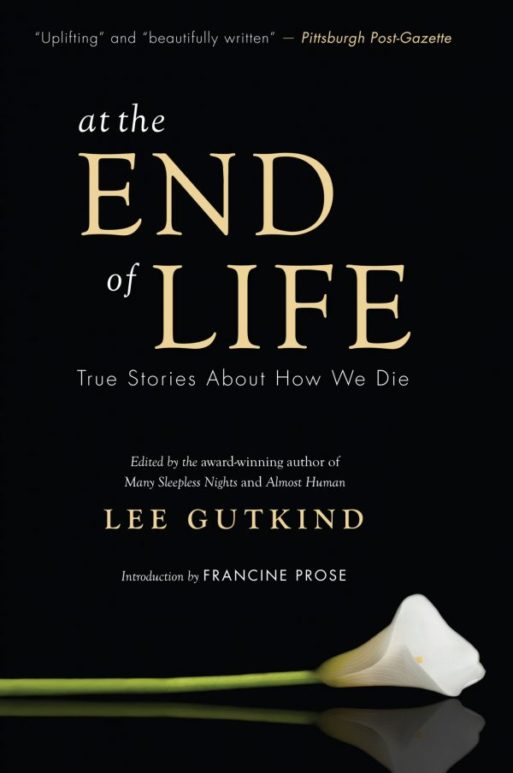 Lee Gutkind’s “At the End of Life: True Stories of How We Die” is not an an easy read. True stories about death and suffering rarely are. Nor is it what most of us would think of as an entertaining book. A compilation of essays about death and loss cannot accurately be called entertainment, I suspect.
Lee Gutkind’s “At the End of Life: True Stories of How We Die” is not an an easy read. True stories about death and suffering rarely are. Nor is it what most of us would think of as an entertaining book. A compilation of essays about death and loss cannot accurately be called entertainment, I suspect.
But it is a powerful book, and an enlightening one. Many of the essays are written by doctors, who graphically describe the conflicting mandates of saving lives and easing death. Others are penned by “ordinary” laypersons: a hospice worker, an award-winning author, a grief counselor, an attorney. All are heart-rending, and all are woven with a common thread: the understanding that death is inevitable, and grief and loss are burdens we all share.
The essays are as diverse as they are similar. Dr. Diana Flescher writes about her patient, Mr. Stone, a man with an incurable lung disease who doctors coerce — more than once — to undergo intubation and mechanical ventilation against his will. There is Lucy, a teenager who dies a painful death after undergoing a bone marrow transplant and developing a devastating condition known as chronic graft-versus-host disease. Then there’s Maya, a young girl who rides a wild horse on a dare and winds up in the ICU, brain dead.
There are fathers, daughters, wives and sons — lives and deaths chronicled in beautiful and sometimes excruciating detail.
Published in 2008, “At the End of Life” is one of a series of books sponsored by the Jewish Healthcare Foundation, whose mission is to promote advances in healthcare services, research and education, particularly among vulnerable populations. Although many of the stories it tells occurred decades ago, they could just as easily have happened yesterday. The medicalization of death; the intractable ignorance of a healthcare system that sees death as the enemy to be defeated at any price; the callous disregard for the needs of the elderly who languish in our nation’s nursing homes — all of these things still exist in 2016. And they still cause untold suffering for those approaching the end of life.

Far too many people still receive care they do not want at the end of life.
(Credit: ask.blogs.lalibre.be)
In his essay about his growing dissatisfaction with the profession he chose nearly four decades ago, Dr. Larry D. Cripe sums up the failures of the American healthcare system’s approach to death and dying in a way that only someone who has seen it up-close-and-personal can. He writes:
“We will move away from the belief that the time of death is negotiable only if we — physicians, patients, and families — seek the shared values and language that celebrate the sanctity of life both in seeking to prolong it and in honoring its end with compassion and kindness. And that will first require an acceptance of the ambiguity and uncertainty that surround the end of life….Physicians are trusted to do the right thing. What is missing is the dialogue with our patients and the public that will lead to a shared understanding of the right thing to do when there are no remedies, when the good fight fails.”
“At the End of Life” helps us see how essential these discussions are. As desperately sad as many of the stories are, its ultimate message is one of hope. As I read essay after essay, I saw how incredibly resilient people are, and came away with the understanding that, through the bond of our shared suffering, we can work together to get this right.

 “At the End of Life: True Stories of How We Die” Edited by Lee Gutkind
“At the End of Life: True Stories of How We Die” Edited by Lee Gutkind


 Our Monthly Tip: Make an “In Case of Death” File to Ease Loved One’s Grief
Our Monthly Tip: Make an “In Case of Death” File to Ease Loved One’s Grief
 Passing of Beloved Comedian Births a New Comedy Festival
Passing of Beloved Comedian Births a New Comedy Festival















